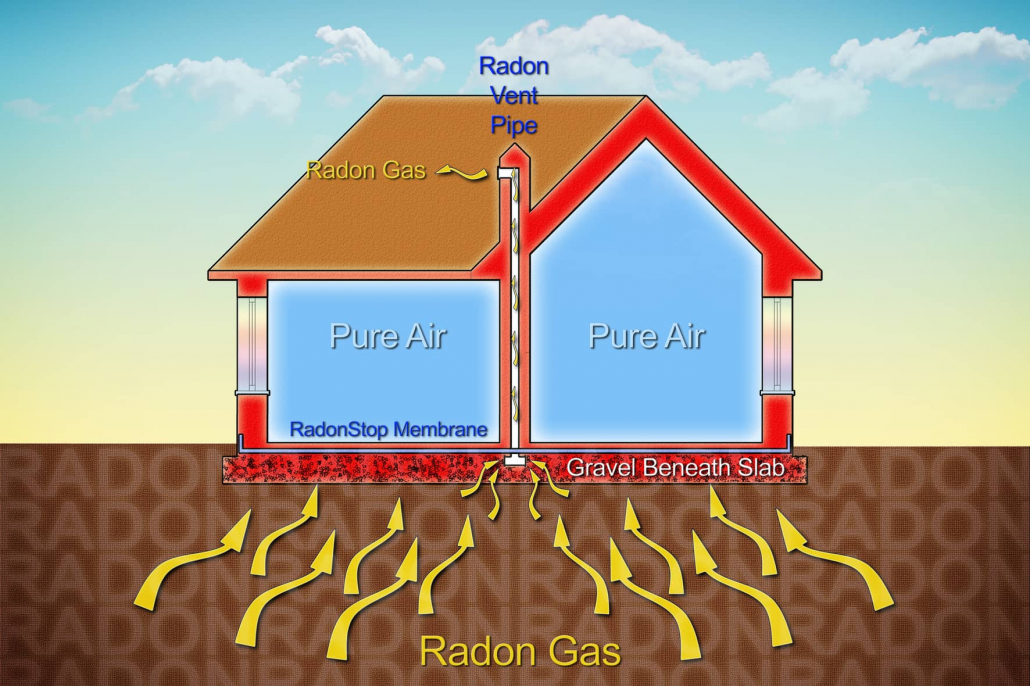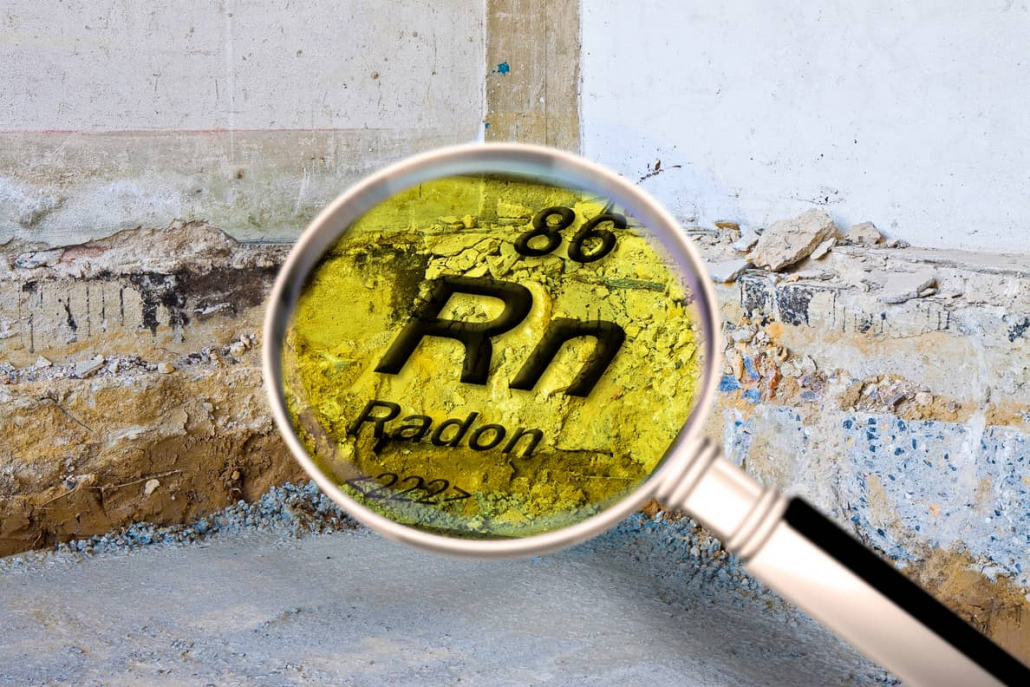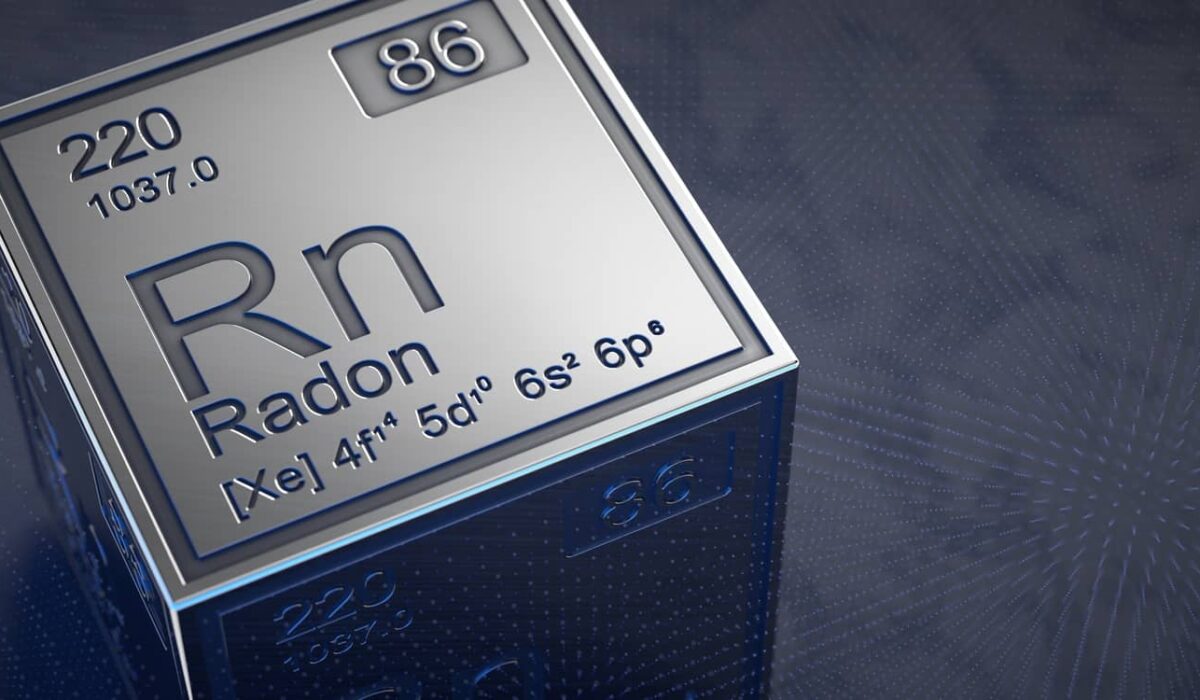There are a lot of decisions and money that go into buying a home. Closing costs, inspections, negotiations, and financing to name a few. Homeowners, sellers, and buyers often find this a stressful time as everyone wants to make the right decisions. When shopping for a home and you discover extra features you didn’t know about, this often helps make the process easier. Many people are excited when they find out that a home has a radon mitigation system. Should I buy a house with a radon mitigation system? Yes, this is a great added safety feature and can protect you and your family.
Let’s take a look.

What Is Radon?
This is a deadly radioactive gas that comes from uranium that is decaying. It occurs naturally in the earth’s soil; once it gets into the home, it builds up and can be trapped. However, if you have a radon mitigation system, a vent is built in and takes the radon through the vent and out into the outside air. This system will also test to see if radon is present as well as remove it from the ventilation and keep the home and family safe.
How to Find Radon?
As mentioned above, radon is found in the soil. However, you can test your home for radon every two years and have a radon mitigation system installed if you find any issues.
- Checking out the materials used to build the home can help you find out if you may have problems.
- Radon is naturally occurring in the soil, water, and rocks as it is a bi-product of radium and uranium that is decaying. Once the soil, water, and rocks make it to the home and are disturbed items, then the gases can be released into the soil.
- Just like carbon monoxide, radon is colorless and odorless, and toxic. Homes built on top of soil have gases that go up into the cracks and into the home.
- If you have unsealed sump pump areas, radon can enter. Also, if you have cracks and openings in your plumbing and water supply or cracks in your foundation, radon to get into your home.
- Radon gas can get trapped in a home because the air pressure is low. This is because the exhaust fans suck out other gases. Then, the radon gas replaces these other gases. As the hot air rises and goes out of the home, new air comes in to replace it. It makes a vacuum-like action and causes pressure variations in the home as well as around it.
- Radon gas comes in through cracks in foundations, basement walls, homes that are drafty, suspended floors, construction joints, and unsealed plumbing. Radon will enter any home and doesn’t matter if it is old or new.
- .According to the Environmental Protection Agency (EPA), 1 in every 15 homes has contaminated levels of radon. Unfortunately, radon is the second leading cause of lung cancer. If you find that the radon levels in your home are 4.0 picocuries per liter (pCi/l) of gas in your home or above, call a professional.
What Is A Radon Mitigation System?
For areas where radon numbers are high or for a piece of mind to keep the family safe, there are radon mitigation systems and often you can buy a house with one. This is installed in the home and warns of high levels of radon. In addition, it can pull the radon that is in the soil and vent it up and into the atmosphere away from the home. This is a great way for it to go as it doesn’t pass through the home so no one is at risk.

An Extra Benefit
Should I buy a house with a radon mitigation system? If the house is something that you like, and it has this radon mitigation system, that is a great added-on feature. However, if there is no radon mitigation system In the home, then you can negotiate or have a radon test done for free or for a small amount of money. Lastly, you will get results from the test and then can determine if you need a system installed.
Should I Buy A House With Radon Mitigation System? – The Cost
Yes, it is possible that testing for radon can be free! It will depend on where you live. However, the health department in your area wants to make sure your family stays healthy so the national average for testing is $125-$275 per test. If you need testing on the home, you might want to opt for a home inspection that also includes radon testing.
A home inspection will cost between $300 and $450, also depending on where you live, and not all home inspection companies offer radon testing. You will want to check with the company you have chosen. If you buy a home that does not have a radon mitigation system, then you will pay between $750 and $5000 for one, depending on the size of your home.
Other Recommended Maintenance
Now that you have your answers regarding buying a house with a radon mitigation system, let’s take a look at other areas of maintenance. One of those is if radon smells. As mentioned above, radon is odorless and colorless, thus it does not smell. However, if you aren’t sure about the radon in your home, there are different test kits you can buy to check. It’s always a good idea to keep your home safe.
Next, while you are thinking about radon, checking the levels and maybe looking for cracks in the home, it might be a good idea to keep an eye out for black mold. Unlike radon, black mold does have a smell. It has a musty smell with an earthy scent. You will see it on damp surfaces with high moisture so it is key to keep the moisture low. If you have a lot of it, call on a mold remediation team to do an inspection.
Lastly, carbon monoxide is odorless and colorless, just like radon. Many people think that opening a window helps with getting it out of the home. However, you will need to open many windows in the home to get the carbon monoxide out. Also, make sure that you don’t leave the car running in the garage, used a grill too close to the home, or in a gas or fuel appliance that isn’t functioning properly. These things can lead to carbon monoxide poisoning.

When Do I Call A Professional?
When buying a home, many buyers think about all the things they would like to have in their new to them home. Things such as wood flooring, or recessed lighting to name a few. However, one of the things that is non-negotiable is the family’s health and safety. If you think you have radon in your home or have concerns about it, contact a professional to test the home. It is worth spending the money to keep your family alive and well. You can also purchase a radon mitigation system after you buy the home and contact a professional about installation.
Conclusion
You can have a radon mitigation system or testing be a part of the home inspection and the buying process. If you are a seller, it is a great add-on and selling feature. When you offer this when listing the home, it will give buyers peace of mind. Keep in mind that radon and carbon monoxide are both odorless and colorless and having a system in place may be a good idea, especially if the levels are high.
Radon testing can definitely be a part of the home inspection and buying process. The idea of getting a radon test on your home is a great idea for the seller and the buyer. Not only does this validate that the seller is offering a safe home. It also validates that the buyer is purchasing a healthy and safe home for their family. Whenever you are dealing with a gas that is odorless and tasteless like radon or carbon monoxide, then having warning systems in place only makes sense. Call your local home inspection team for a full home inspection. Reach out to Edifice Inspections in Peachtree Corners, GA for a full home inspection with a radon inspection.


4 Comments
Comments are closed.